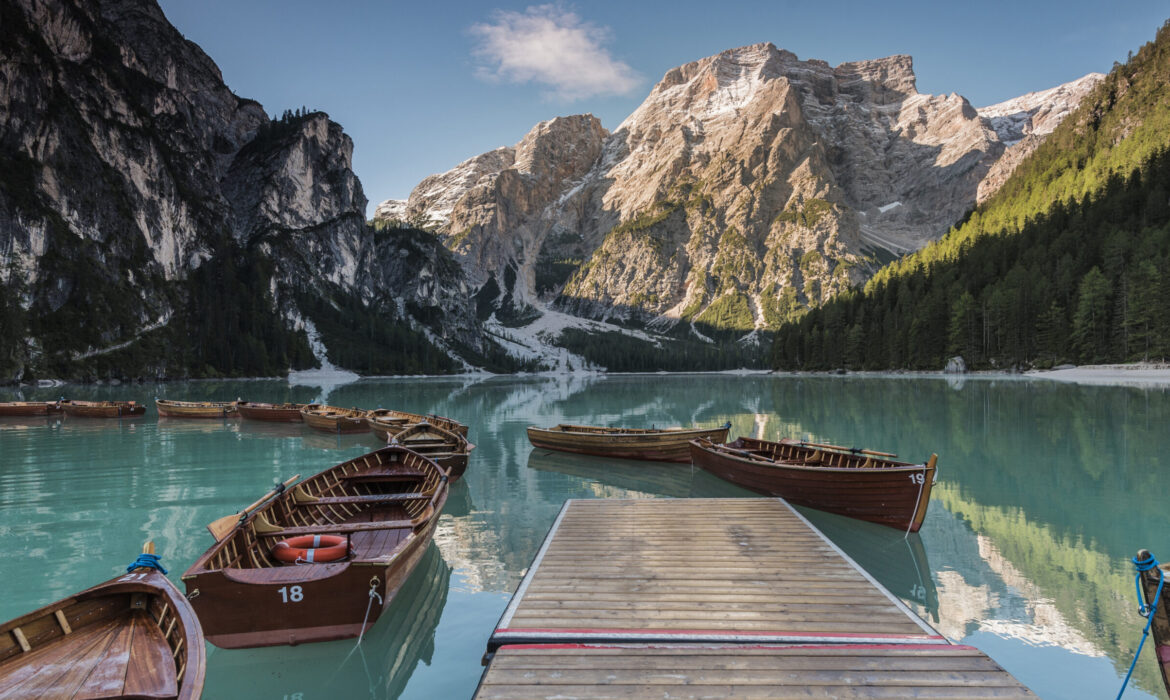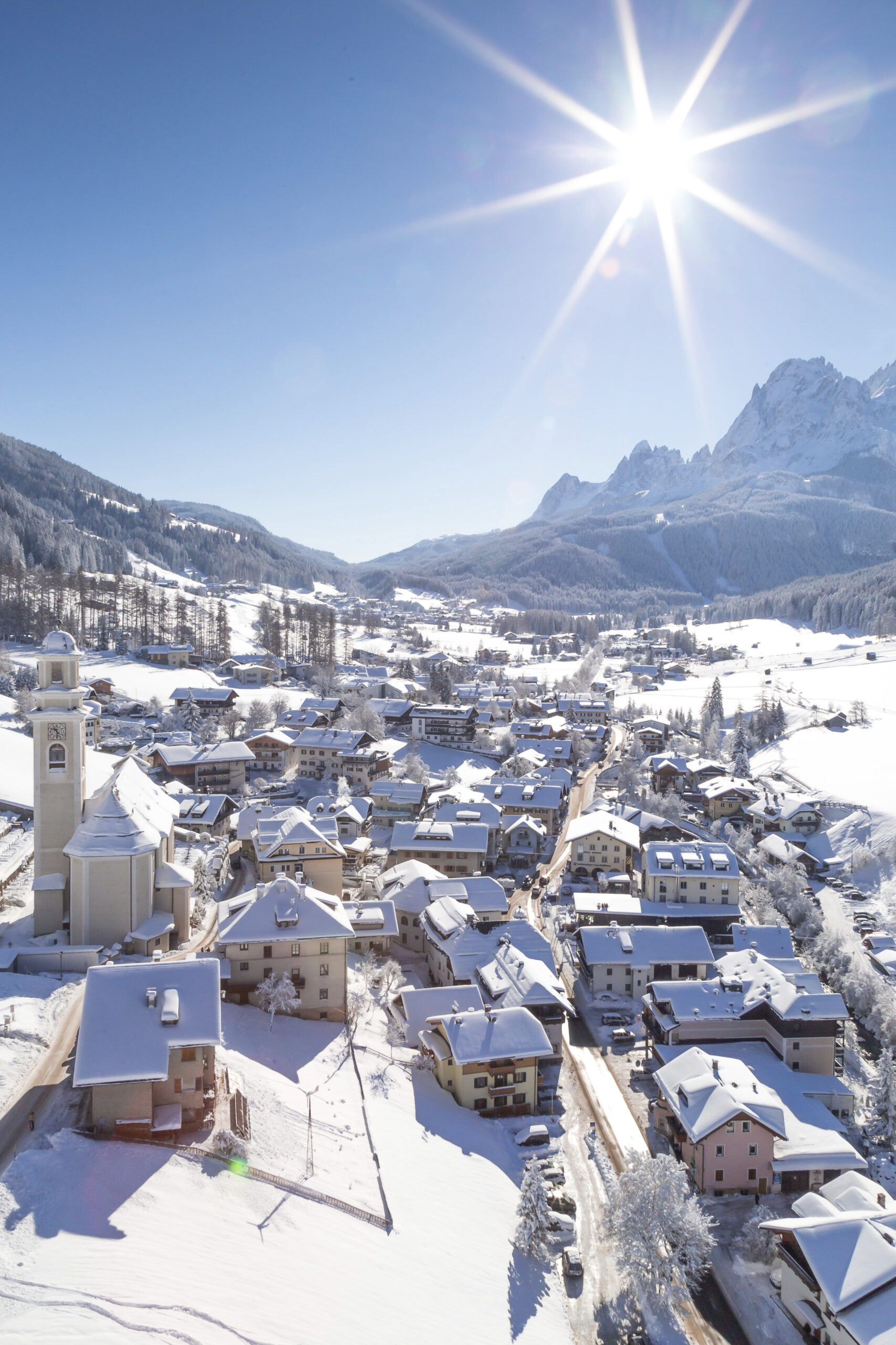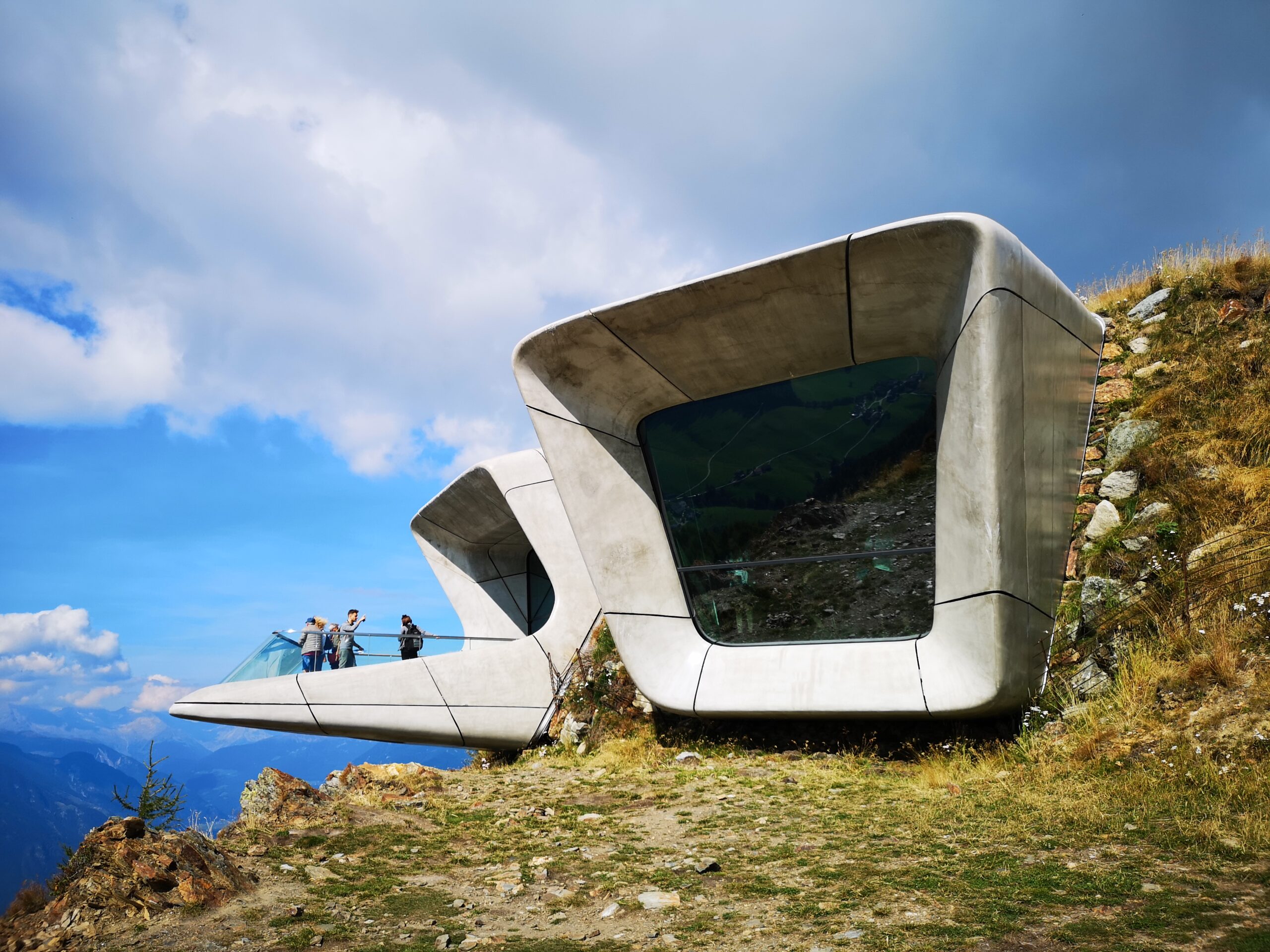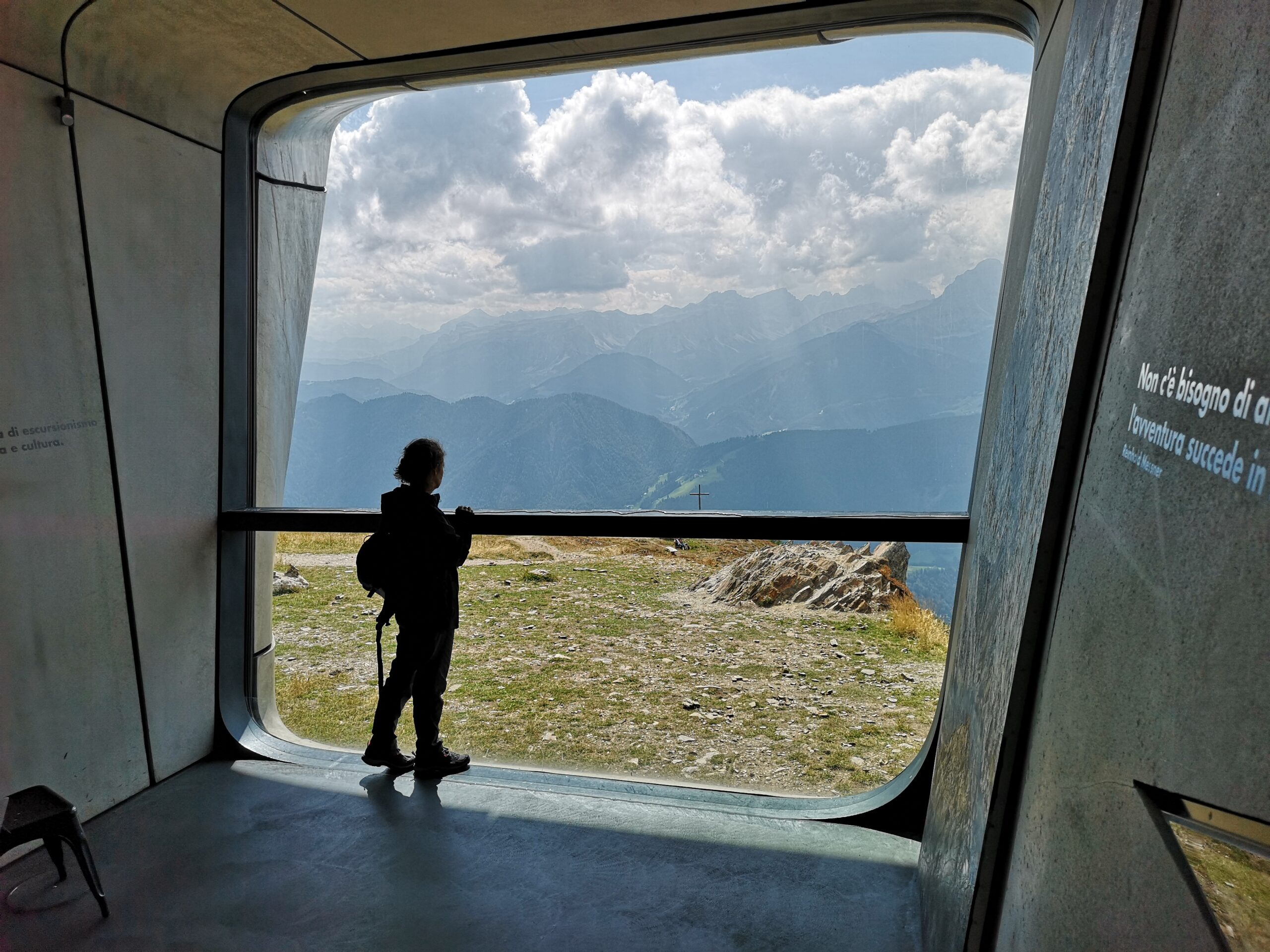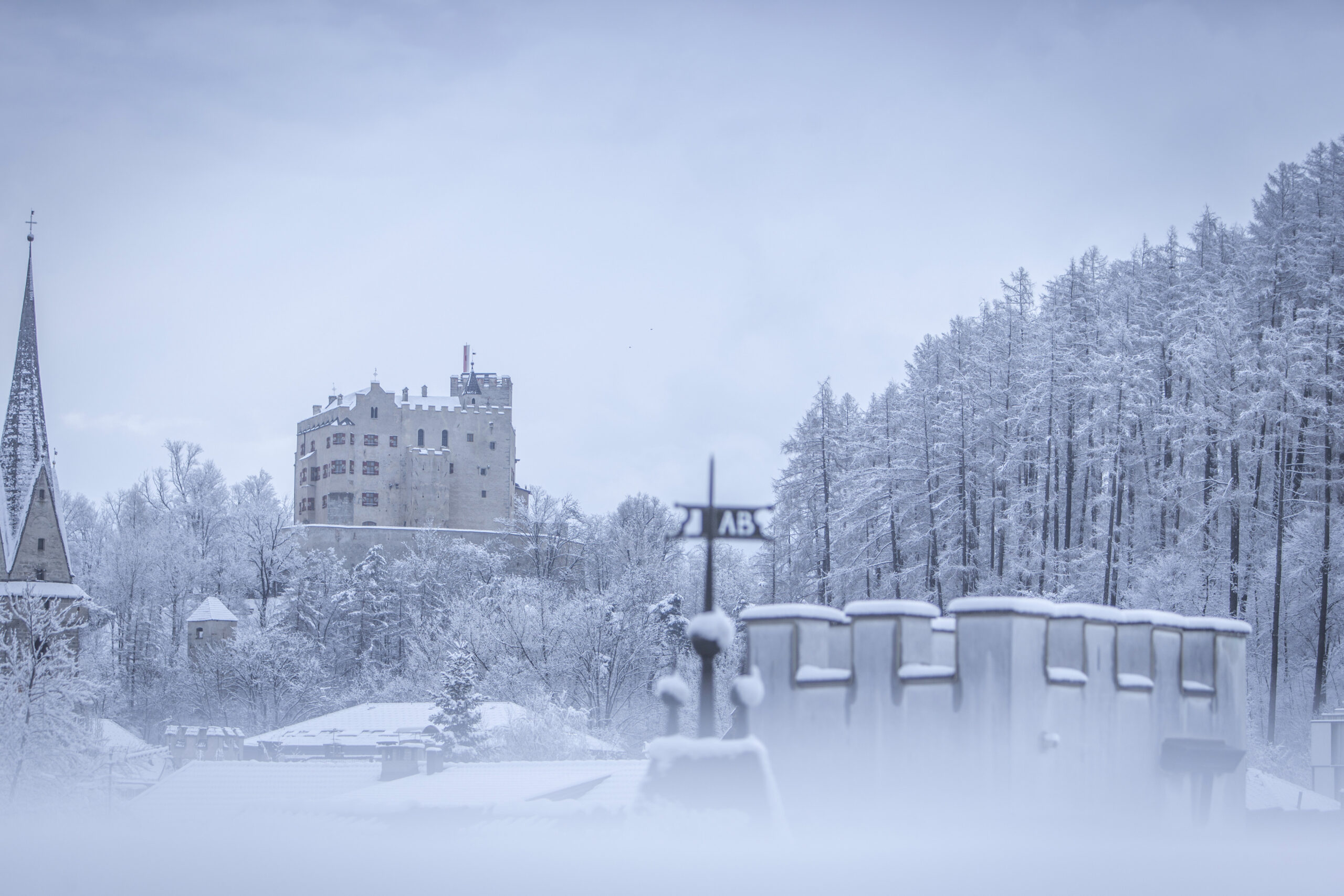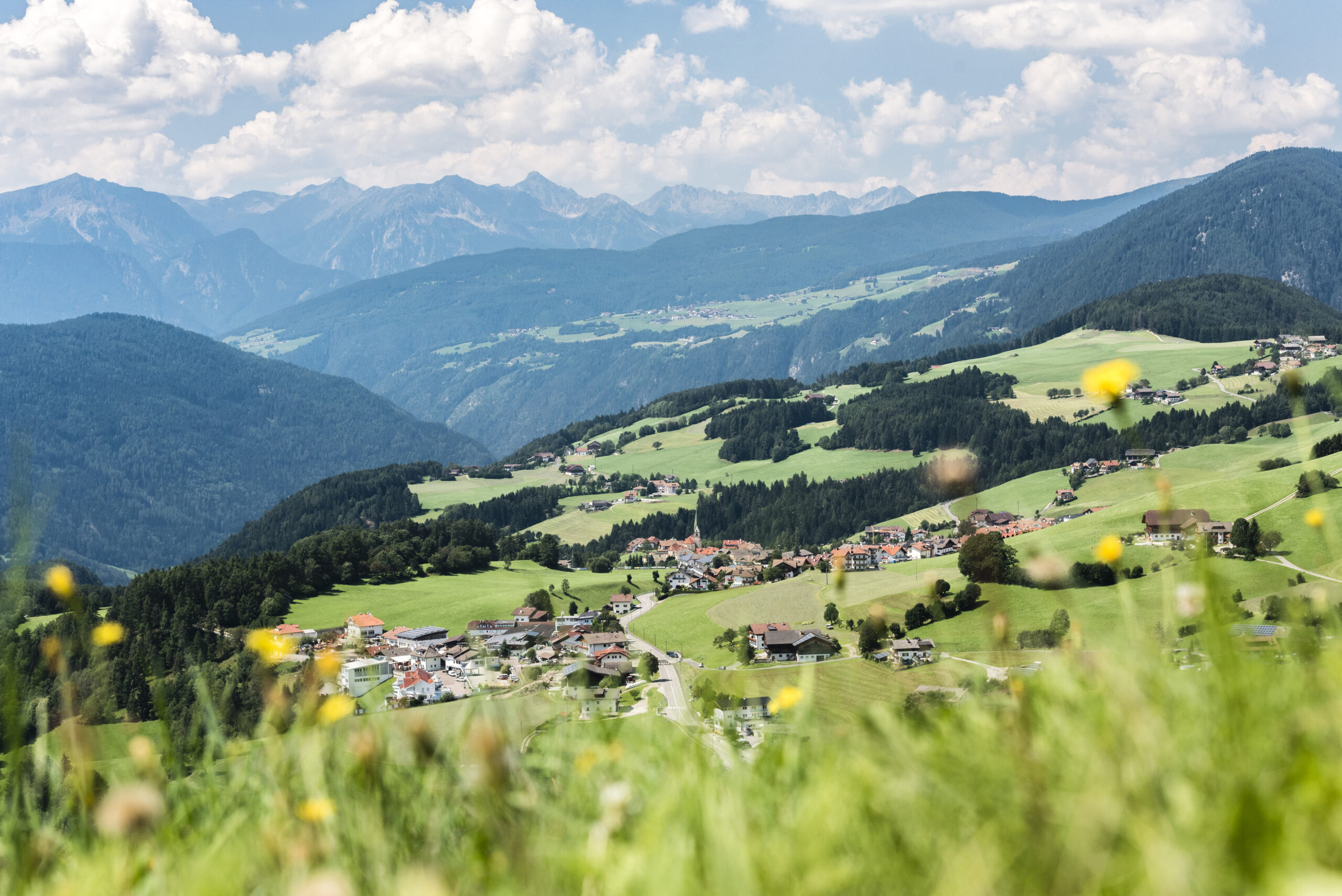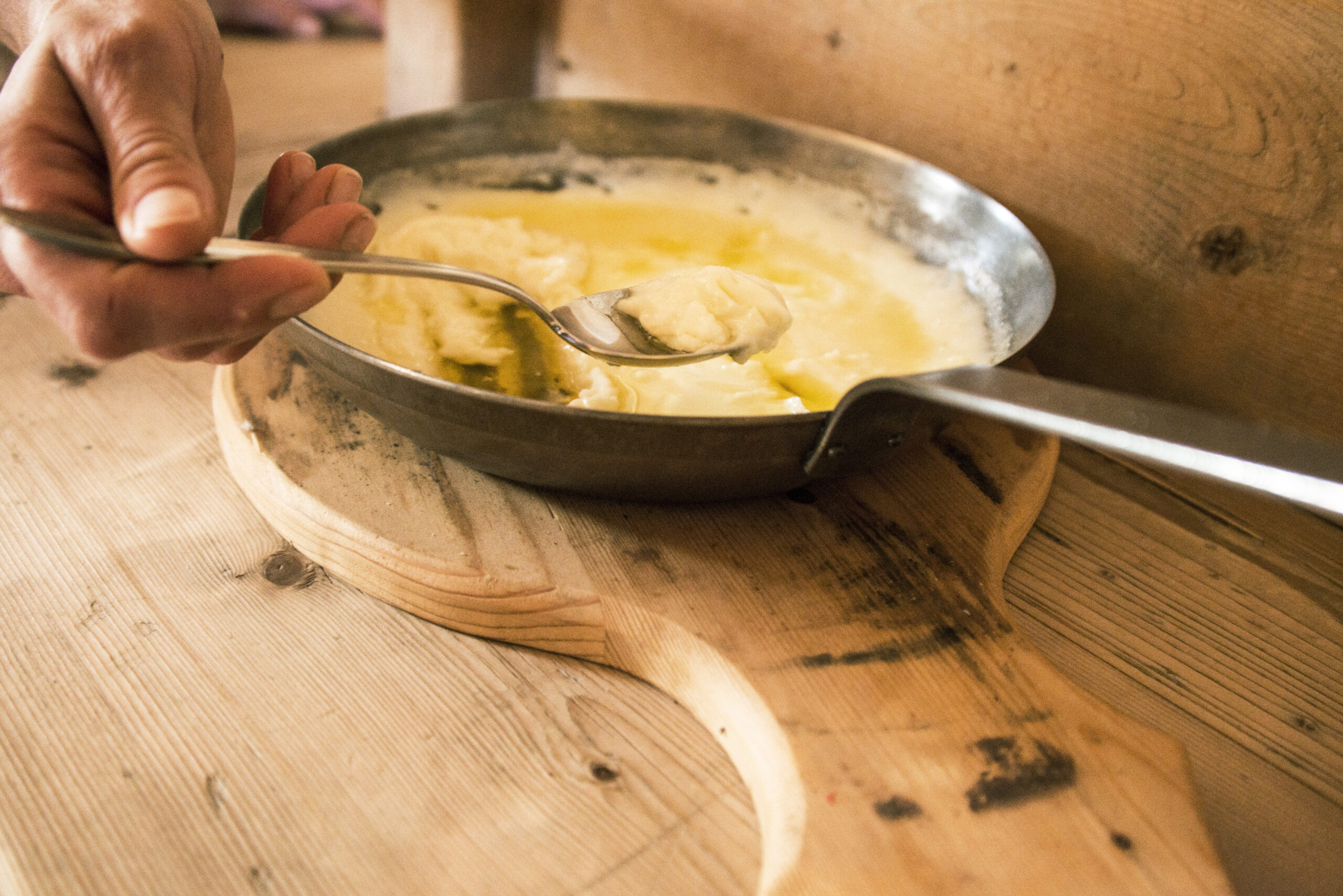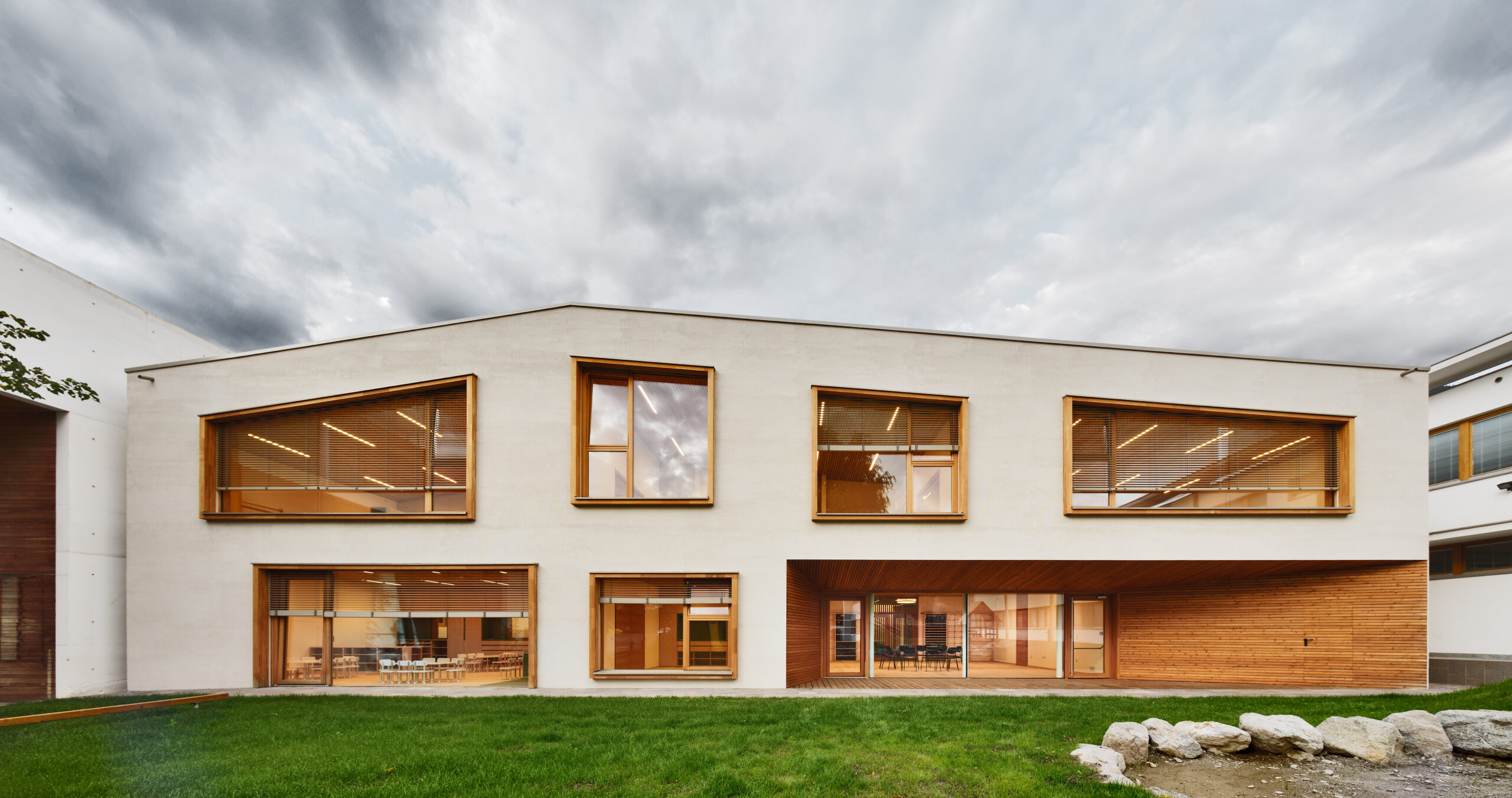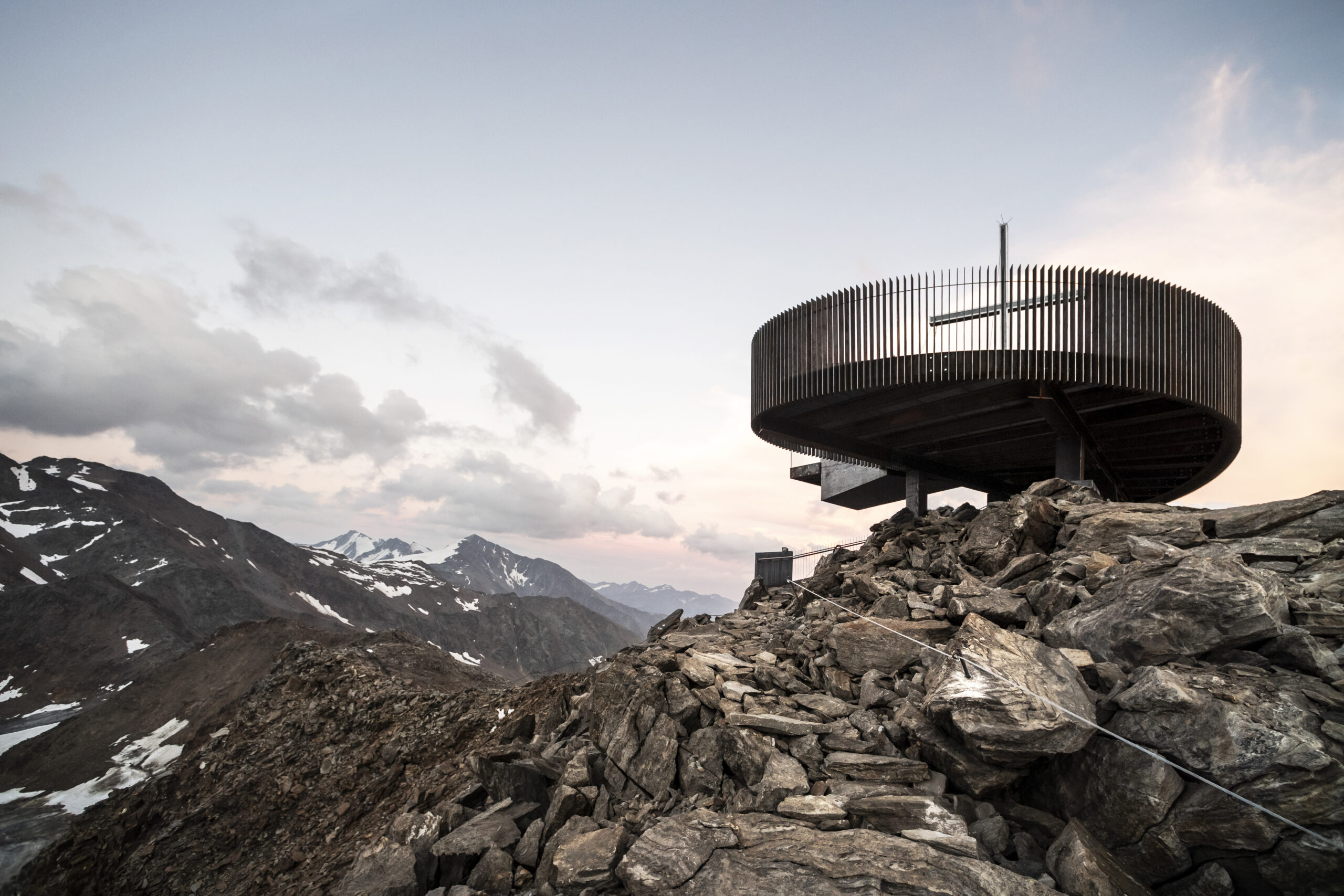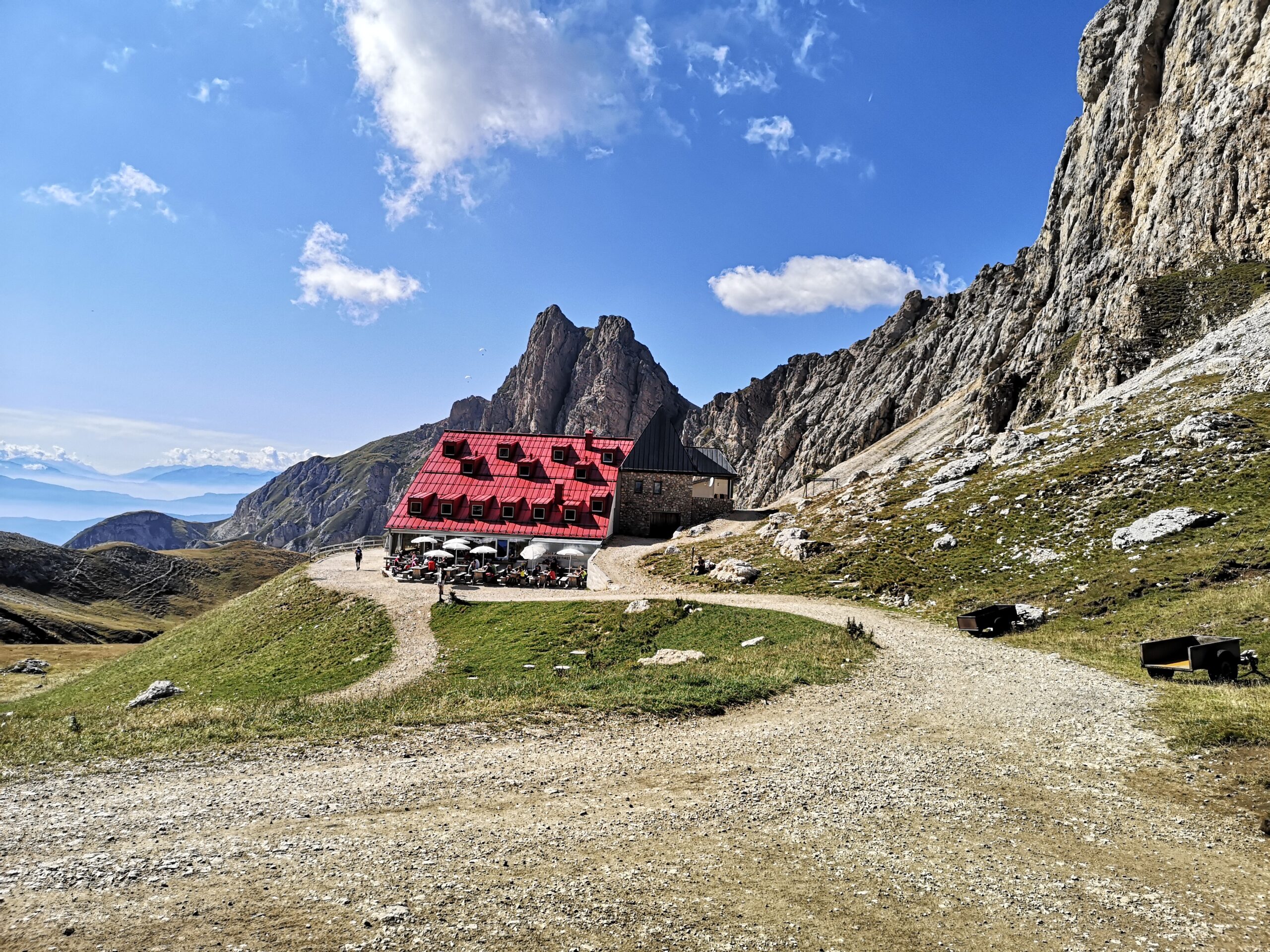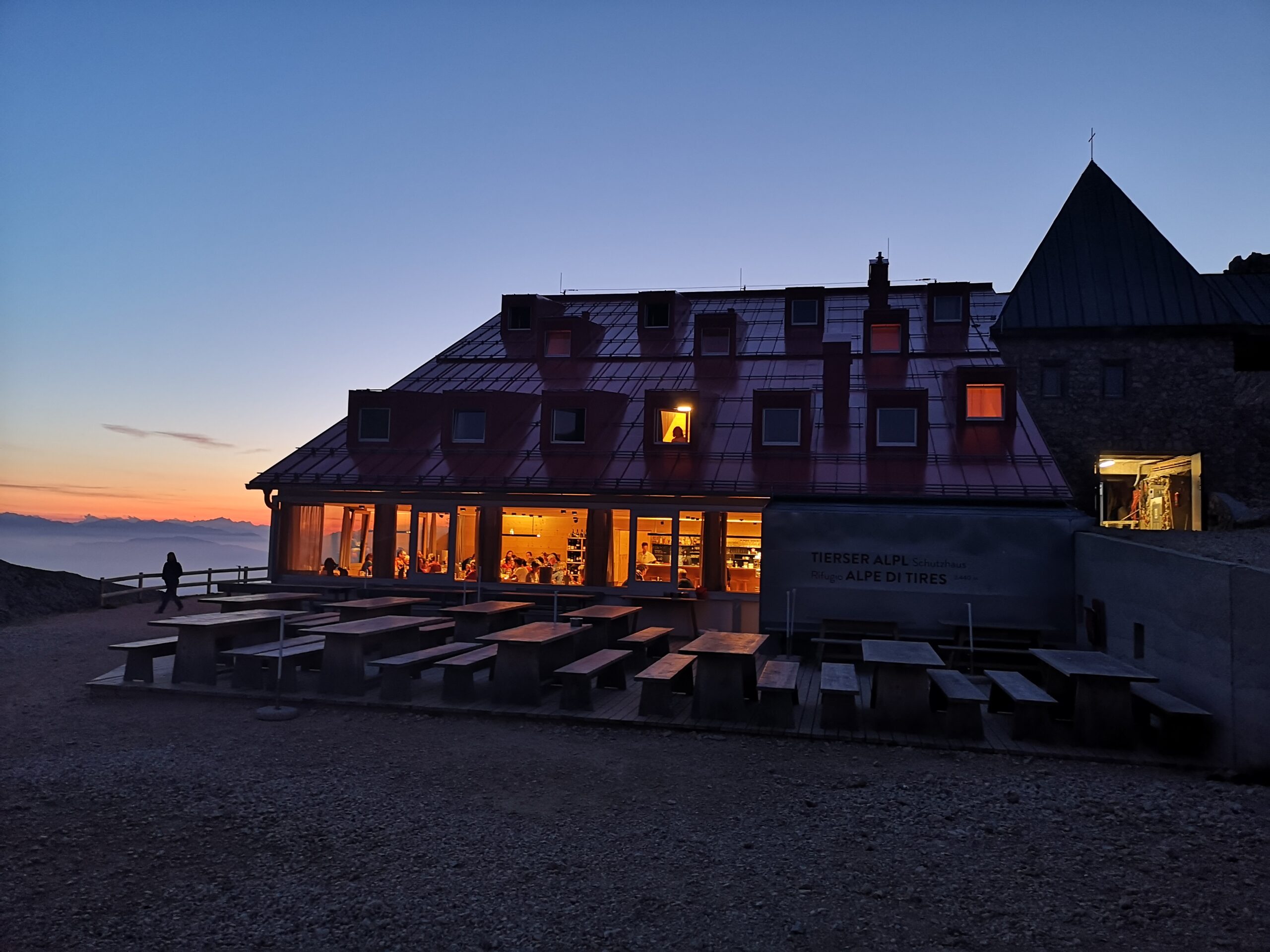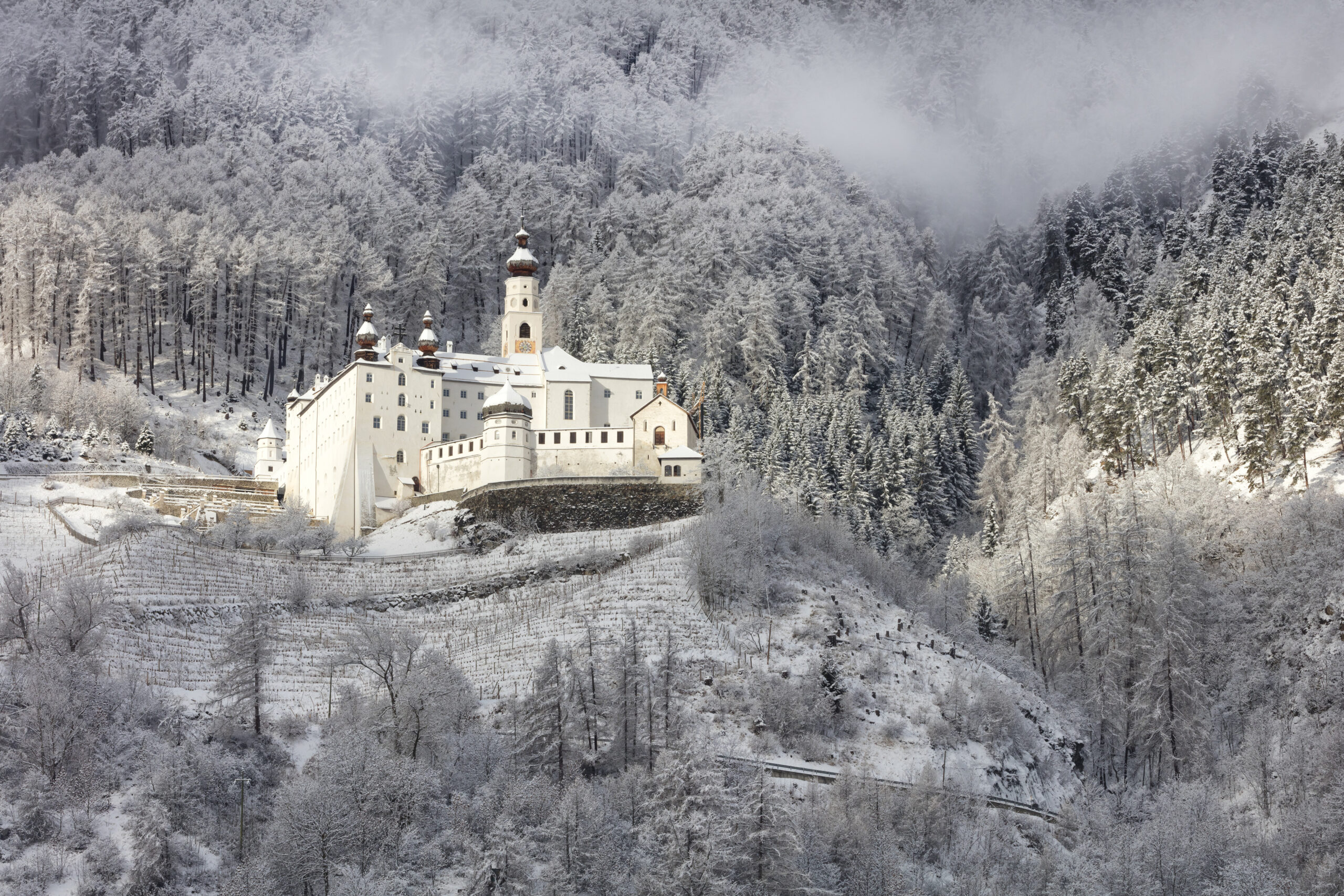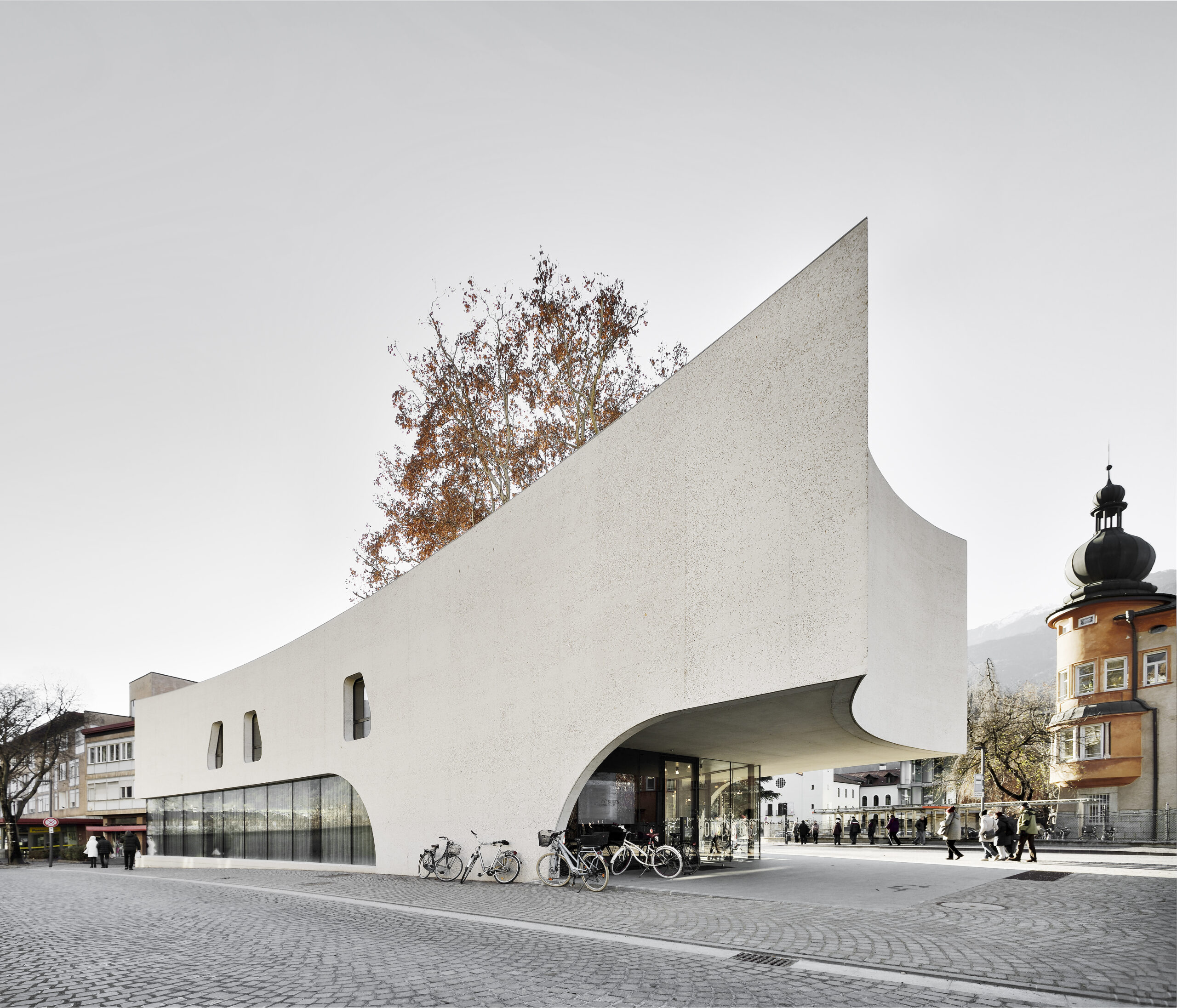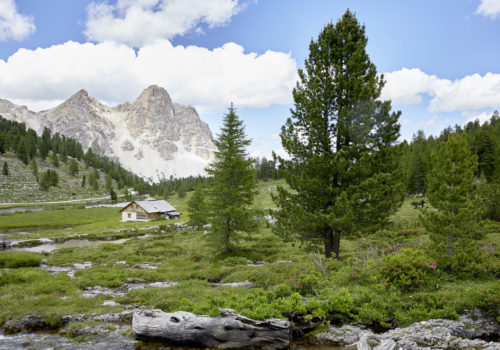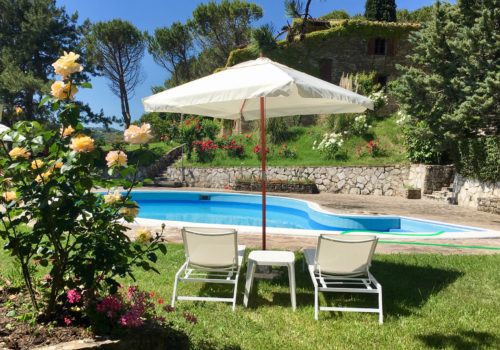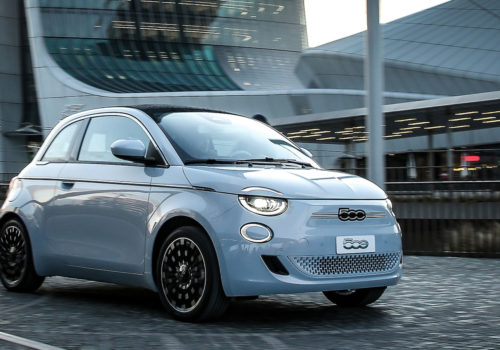A land to be discovered for lovers of fine food and more, perfect for a pause to detox
We arrive in Alto Adige after journeying through the Valle d’Aosta, Emilia Romagna and the Apulia regions, and after having tasted delicacies of every kind, from the Valpellina-style soup to the salama da sugo and including orecchiette with broccoli rabe. Today Pantografo takes you to Alto Adige, one of the most beautiful and tantalising regions in Italy. It is particularly recommended not only for people who enjoy Alpine landscapes and canederli, but for admirers of contemporary architecture as well. On its small surface, the region features such a density and quality of works as to gratify even the most enthusiastic and selective connoisseur of Alpine architecture.
Starting in Bolzano, which deserves a visit in its own right (preferably not during the traditional Christmas markets which cover up the true face of the city), Pantografo wishes to provide some clues
We begin in Val Pusteria, which concentrates many incredibly fascinating places such as the Tre Cime di Lavaredo in the Dolomites (a UNESCO World Heritage Site) and Lake Braies. Lovely little towns such as San Candido, with its elegant Piazza San Michele, and Sesto, with the fascinating view of the largest stone sundial in the world, located in the district of Moso, which shows the solar orbit coinciding beautifully with the mountain tops.
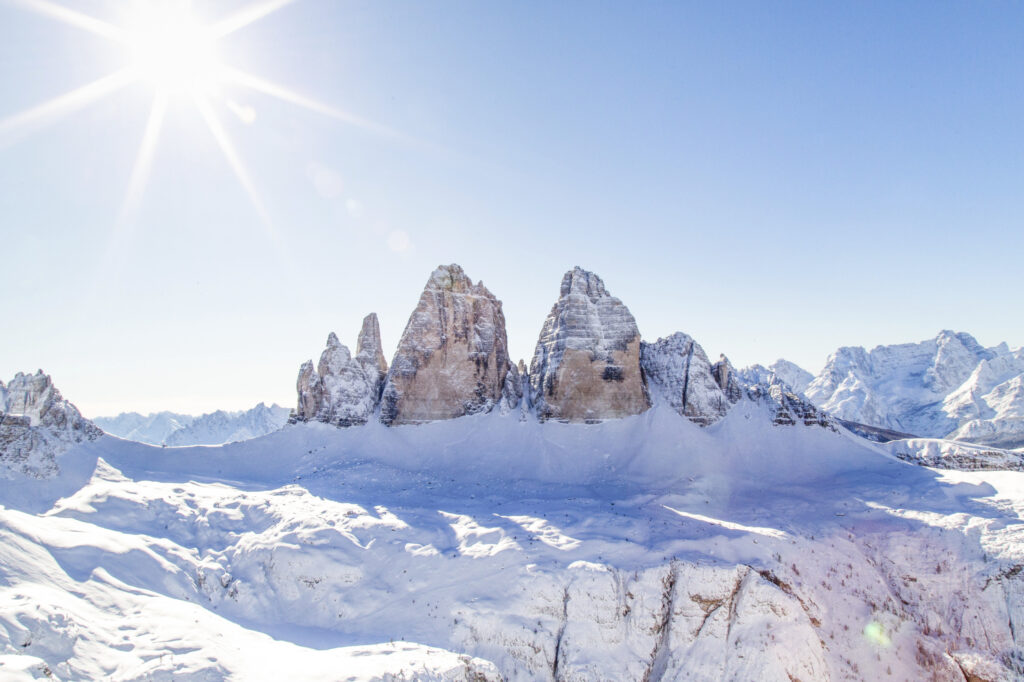
Tre Cime di Lavaredo – Dolomites (Ph. © IDM Alto Adige/Klaus Huber)
It is here that you will find the mountain architecture by Plasma Studio, the international team of architects with offices in Moso (as well as Beijing and Shanghai). Here Ulla Hell, one of the three partners, has been designing projects since the early 2000s, showing a strong vocation for a language that is contemporary yet capable of reinterpreting the signs of memory. Her work, prevalently residential, constantly expresses the intent to create an osmotic relationship between nature and architecture relying on ample glazed surfaces that literally frame the landscape. Not to be missed are the “Strata Hotel” and the “Residence Paramount Alma”, both in Moso, the “Dolomintenblick” and the “Cube House”, both in Sesto, and in San Candido the “Tetris House” and the “Esker House”. And to really binge on Alpine architecture, don’t miss a visit to Plan de Corones, on the border between Val Pusteria and Val di Marebbe, which in 2015 inaugurated one of the “MMM” Messner Mountain Museums, commissioned by Reinhold Messner, the mountain-climber from Alto Adige, and designed by Zaha Hadid.
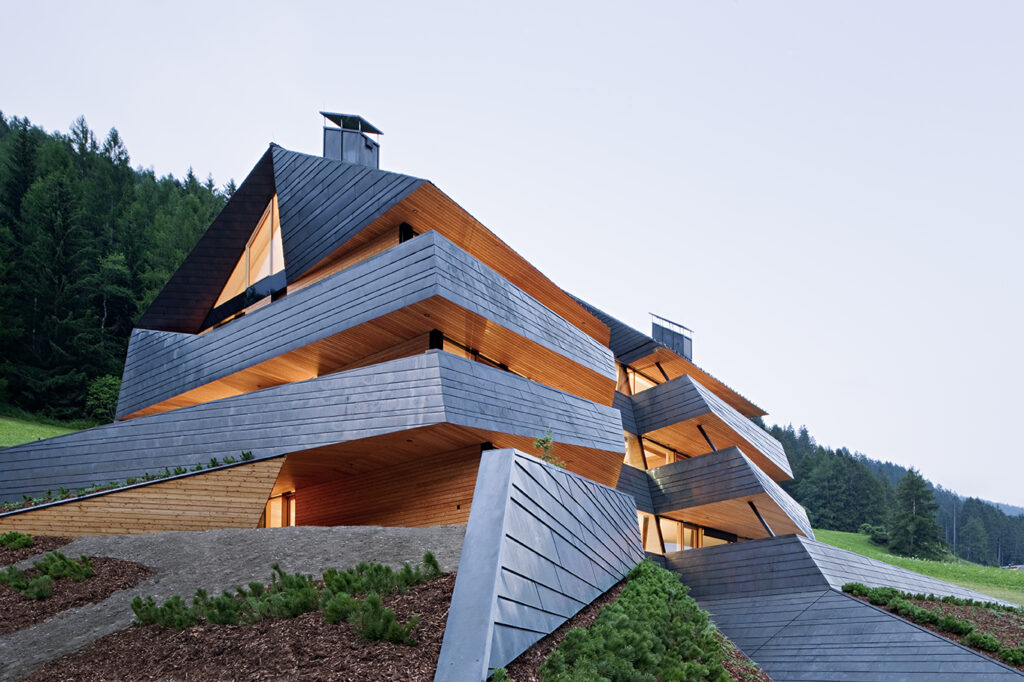
Dolomitenblick, Sesto, Val Pusteria. Progetto: Ulla Hell / Plasma Studio. (Ph. © Hertha Hurnaus)
What to eat between one visit and the next? The territory offers unlimited fare, including, just to name a few, the “Tirtlan” (fried rye puff pastry traditionally filled with ricotta, spinach, potatoes or cabbage), the “Niggilan” (leavened krapfen pastry fried in boiling oil and flavoured with a touch of anise and a drop of grappa), the “Schüttelbrot” (flat, crunchy and spicy bread), the “Sextner Bergkäse” (mountain cheese), the “Toblacher Stangenkäse” (Dobbiaco cheese). Moving on to Valle Aurina, you can taste the “Graukäse” (grey cheese), which has very little fat and a sharp taste, and is often eaten raw with red onion, dressed with olive oil and wine vinegar. The architecture deserving of a visit in Valle Aurina includes the Fire Station in Campo Tures, for example, and the Hotel Bühelwirt in San Giacomo, both designed by Pedevilla Architekten.
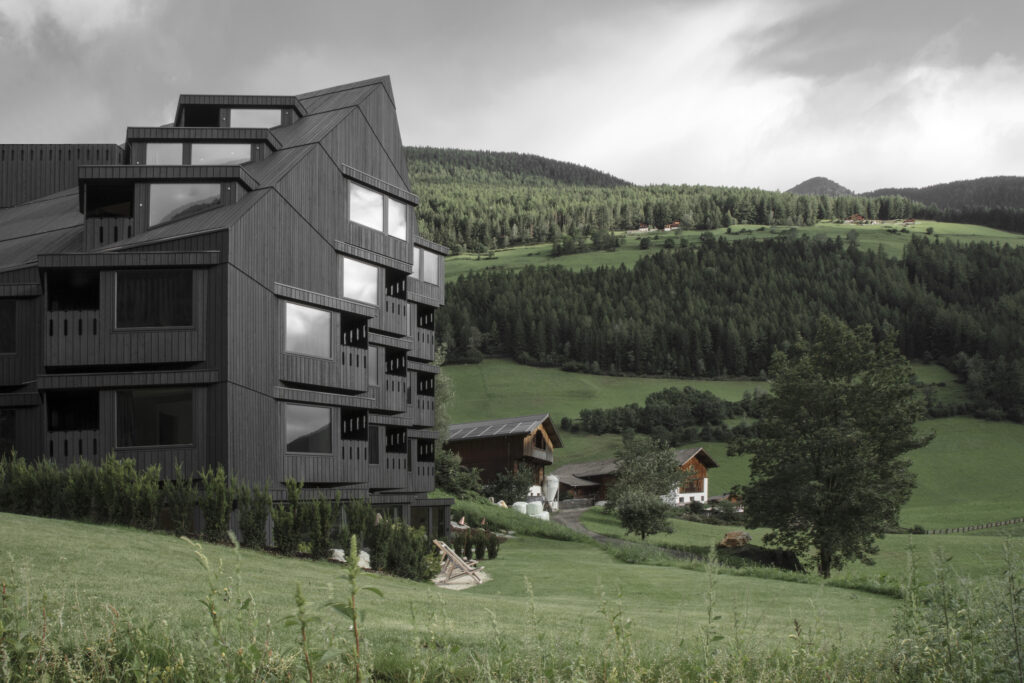
Hotel Bühelwirt, San Giacomo, Valle Aurina. (Ph. © Gustav Willeit)
Moving west you come into the Val d’Isarco. The main city here is Bressanone, which is interesting both for its historic architecture, such as the Duomo di Santa Maria Assunta e San Cassiano, the Parrocchiale di San Michele, the Torre Bianca, the Seminario Maggiore and the Palazzo Vescovile, and for its contemporary architecture, such as the more recent Locanda Decantei by Pedevilla Architekten, where you can enjoy dishes such as Smoked Arctic Char, melon, cucumber, quinoa and bacon, edamame, cream of peas and mint, and the Alter Schlachthof Brixen by IMOYA Design & Architektur, where not only can you taste delicious local dishes reinterpreted with a contemporary spirit and prepared with organic locally-sourced raw materials, you can also stay overnight in the attic of what was once the local slaughterhouse. Should you have the time and opportunity, let Elisabeth Tscholl (managing director of the place) tell you what they use to move the chickens of the farmer who sells them his eggs so that they can feed in constantly changing fields: you will hear a curious anecdote which at the same time reveals the attention that is reserved to how to feed the animals. The city and the rest of the territory feature some of the finest works by Bergmeister Wolf. Among others, the new Winery at the Hotel Pacherhof in Varna, which has won many awards to date.
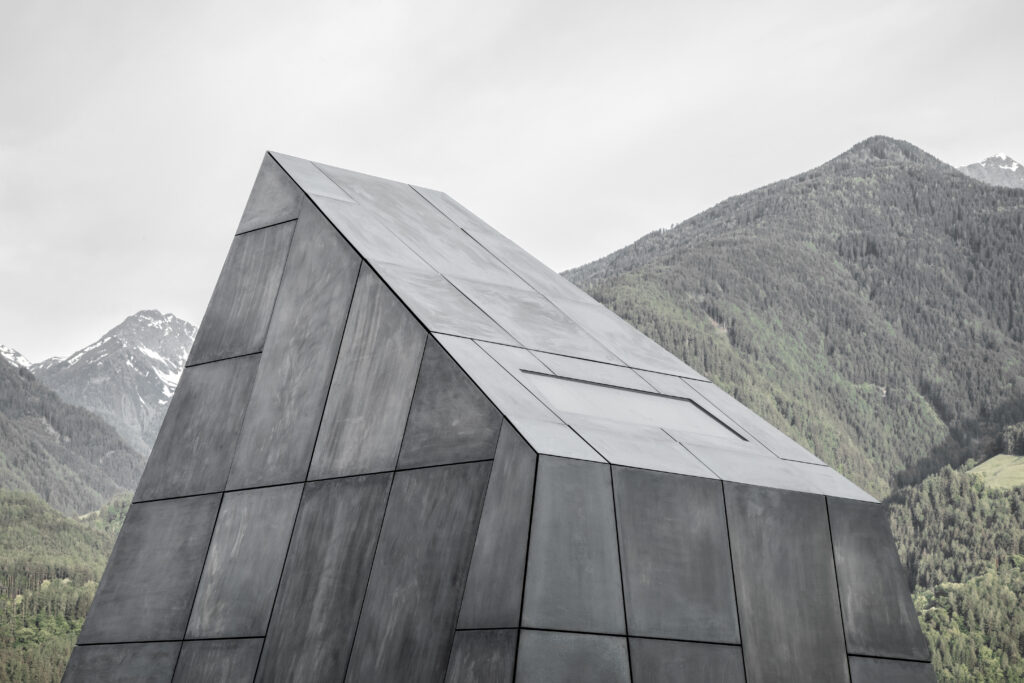
Hotel Pacherhof, Varna. (Ph. © Gustav Willeit)
In fact, fine architecture is everywhere in Alto Adige. Even for tourist information, there is a structure renowned for its elegance, the new headquarters for the Associazione Turistica di Bressanone designed by MoDus Architects. And this is not an isolated case: in Sesto, Val Pusteria, Pedevilla Architekten recently completed the Infopoint, a minimalist micro-architecture that echoes the colours of the local rock and forest. Before leaving the Val d’Isarco, don’t forget to try the Red Turnip Canerderli, the lamb specialty Villmosser Brillenschaf, and the Kloatzn, ravioli filled with mountain cheese and pears. Worth taking home are the Barbiano plums, the Naz-Sciaves apples, the yogurt from Vipiteno, the chestnuts from Velturno.
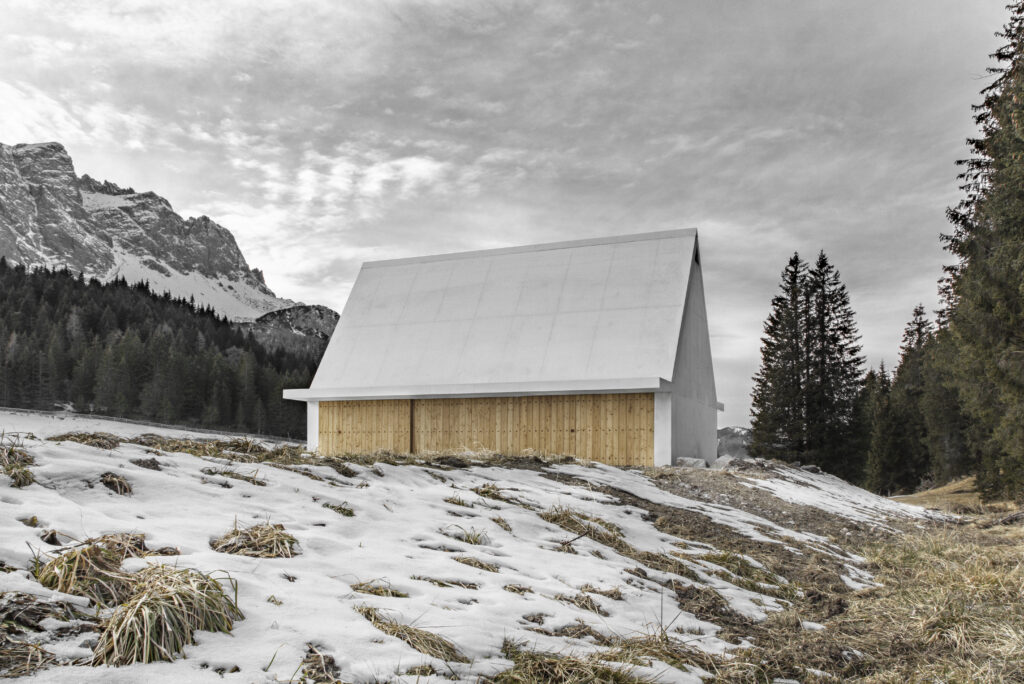
Infopoint Passo Monte Croce – Sesto, Val Pusteria. Project: Pedevilla Architects with Willeit Architecture. (Ph. © Gustav Willeit. Courtesy Pedevilla Architects).
Moving even further westward, we reach the Val Passiria, north of the thermal city of Merano, where we recommend a visit to the gardens of Castel Trauttmansdorff. One of the most significant cities in the Valle is San Lorenzo in Passiria, along the scenic road known as “The emotions of Passo del Rombo”, San Martino in Passiria and the Castel Giovo with its typical Medieval atmosphere, Moso in Passiria, where the Bunker Mooseum illustrates the characteristics of nature and the history of the valley. The other towns include Caines with the trail of the Piramidi (steep sandstone structures shaped like towers or cones) which leads to the “Ungerichthof” chalet, and Rifiano with “Burgstall”, the prehistoric village. If you would like to visit more contemporary architecture, go to San Martino to see the Library designed by the firm CeZ Calderan Zanovello and the Civic Centre by Andreas Flora. Val Passiria counts excellent local craft beers, and is known for its recipes based on mountain fish (trout and Arctic char) and its Muas (flour cooked in milk). Don’t forget to try the Schwarzplentener Riibl (buckwheat omelette) and the Ricotta and vanilla canederli (there is in fact a sweet version of canederli, just as there is a savoury version of strudel, made for example with red cabbage).
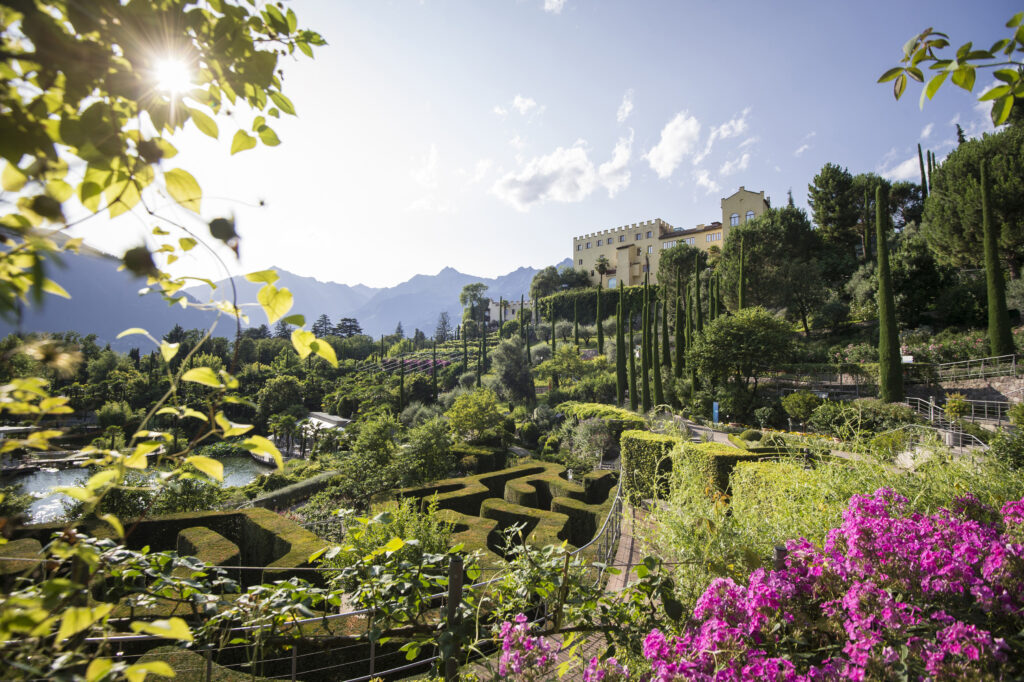
Castel Trauttmansdorff Gardens – Merano. (Ph. © IDM Alto Adige/Alex Filz)
Continuing our travels westward, we reach Val Venosta which boasts the Ortles (3906 metres above sea level), the highest mountain in the Trentino-Alto Adige region. What should you see? Most certainly the suggestive sunken belltower in the middle of Lake Resia, the Stelvio National Park with the highest mountain pass road in Italy (it is also renowned for being included as a stage of the Giro d’Italia race). Equally fascinating are the Alta Via dell’Ortles, a circular high route around the Alpine group of that name, divided into seven one-day legs, the trail of the rogge – watercourses – and the Medieval city of Glorenza, which among other things features the whiskey distillery designed by architect Werner Tscholl. For those interested in school architecture, the Alto Adige region is a hotbed of innovative schools conceived on the basis of requirements developed for the most cutting-edge educational models. You will find them almost everywhere and they would be worth a trip on their own, but if you happen to be at Sluderno, visit the award-winning nursery school by Roland Baldi Architects, and you will discover how an educational space can become a scenario for growth based on true quality and the needs of the youngest students, in addition to itself being something to learn from. And going back to nature, from Silandro you can reach the district of Maso Corto and from there the tip of the Grawand, where you will find Ötzi Peak, the scenic platform on the glacier of Val Senales, designed by noa* network of architecture.
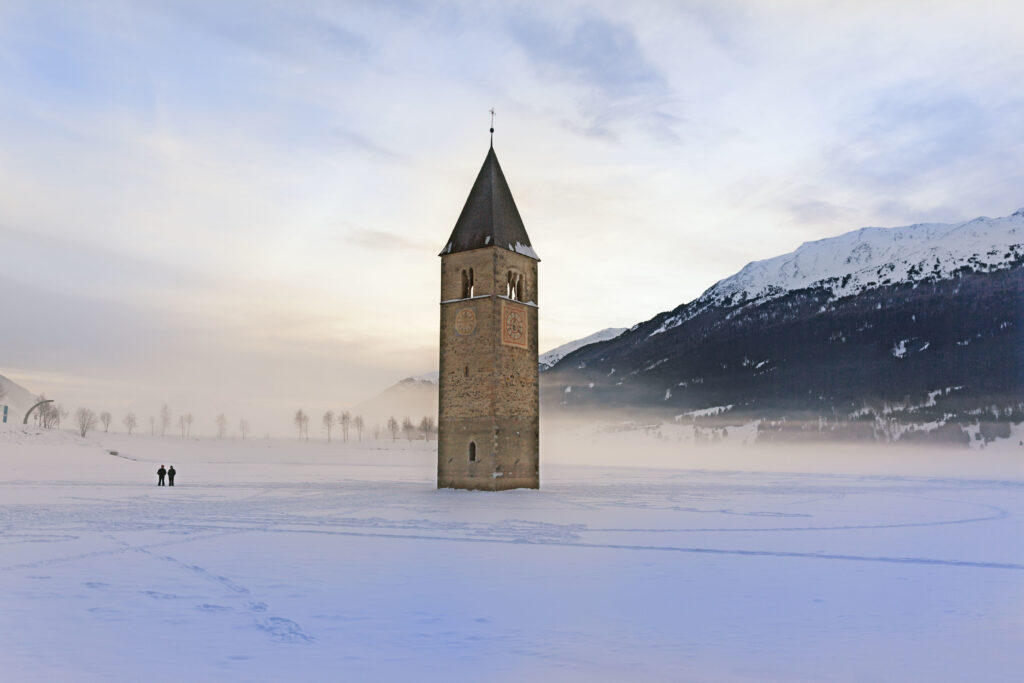
Lake Resia and its sunken belltower, Val Venosta. (Ph. © IDM/Frieder Blickle)
At this point, it is time for refreshment. With what? Ur-Paarl (Slow Food Presidia, recipe from the Monastery of Marienberg above Malles), rye bread, spelt and sourdough starter often enriched with cumin, or with fennel seed or clover. You can accompany it, for example, with a nice piece of Stelvio Cheese (Slow Food Arca) and with Speck. If you want lighter fare, and the season is right, grab the opportunity to try the Val Venosta Apricot (Slow Food Arca), small, orange, velvety and very aromatic.
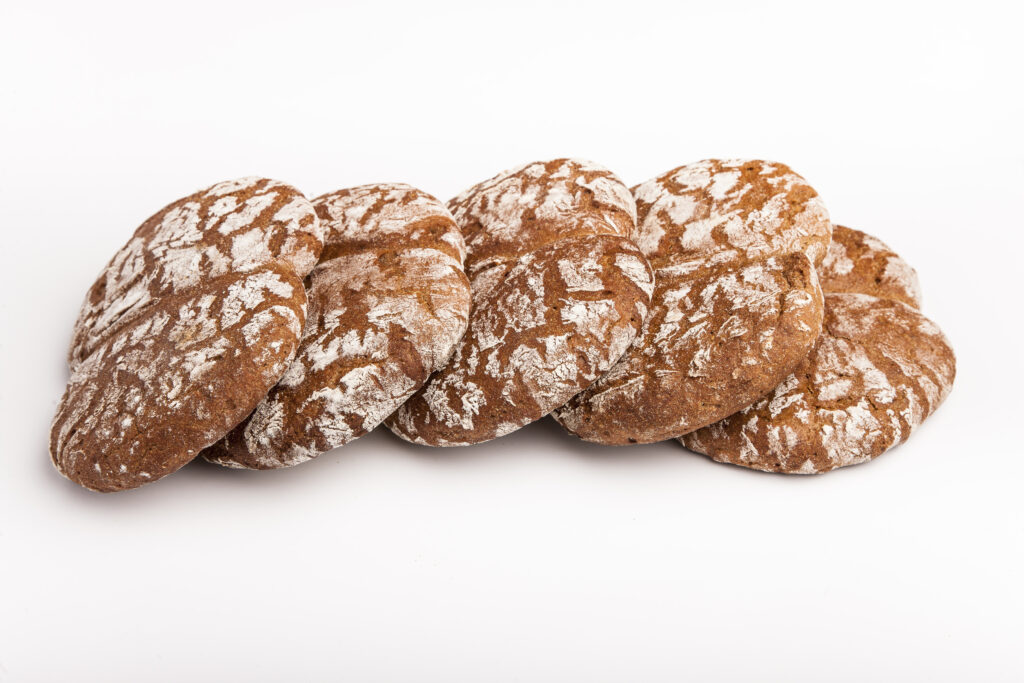
Ur-paarl. (Ph. © IDM/ Florian Andergassen)
Other things you can do anywhere in Alto Adige are primarily skiing, but also mountain biking, visits to the Alpine dairy farms on the mountain trails and the fitness and wellbeing trails. Also a major attraction for hikers are the Alpine shelters, isolated at high altitudes and extremely peaceful. One in particular is the “Rifugio Alpe di Tires” at 2440 meters above sea level, on the mountain group of the Catinaccio.
How do you get there? You can depart from Siusi (but first go look at the Messner home by noa* network of architecture, it will just take a minute), take the cable-car partway up then begin your hike enjoying the view of the Sciliar Plateau to the right. After your exhausting yet suggestive hike, when you get there, ask for a Kaiserschmarren with cranberry jelly and confectioner’s sugar (you won’t believe your eyes and your palate will thank you), accompanied by a glass of blueberry or apple juice. Then enjoy the colours of the evening, dine for example with Beef goulash with canederli and stay overnight in one of the rooms at the refuge, which are like warm wood shells. Ask to stay in the new rooms (the addition was designed by Senoner Tammerle Architetti), they are even more beautiful and looking out the windows, you can see the stars.
© ALL RIGHTS RESERVED
Translated by Olga Barmine
Cover: Lago di Braies, Val Pusteria. (Ph. © IDM Alto Adige/Harald Wisthaler)


